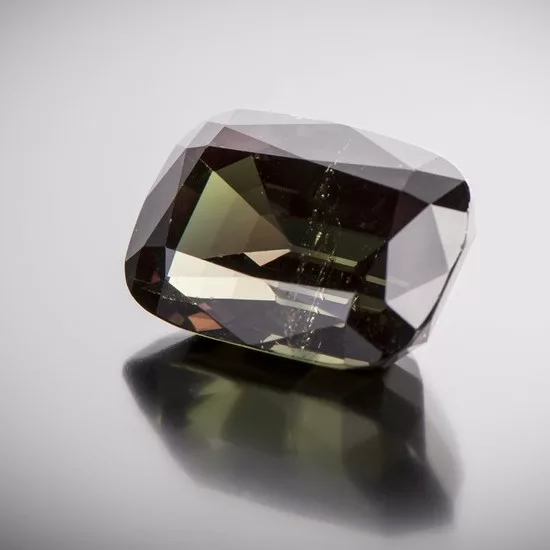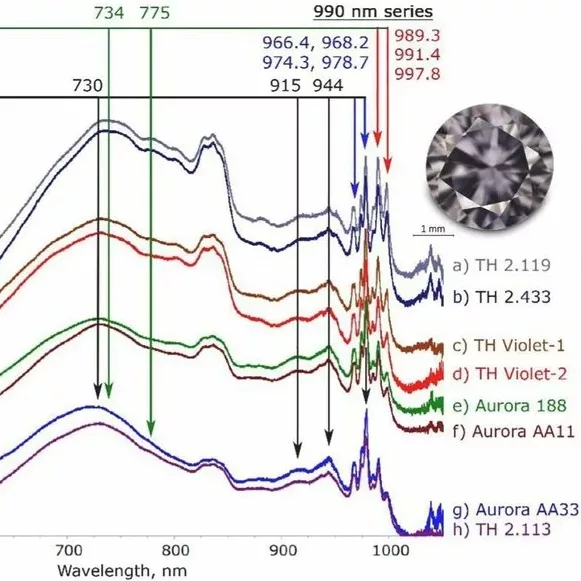Study of a historical Alexandrite from Paris school of mines collection
Keywords: historical alexandrite, non-destructive analysis, geographic origin determination
Rare are the scientific studies on exceptional gemstones belonging to museum collections. This investigation is part of an ongoing project, on the study of historic gems, of the Mineralogy Museum of Mines Paris – PSL in partnership with the French Gemological Laboratory (LFG) on a 42.54 ct alexandrite (Fig. 1). This exceptional gem was kept in the vault since its donation to the museum in 1882 but will be exhibited later this year as part of a temporary exhibit at the Mineralogy Museum. It was exhibited at the World Fair in Paris in 1878 by its lapidary and owner, M. Henri Garreaud, who eventually donated it to the museum four years later; no provenance was indicated at the time of the donation.

The classical gem characterization (using refractometer, specific gravity kit, a 3 Watt SW- and LW-UV lamps) was conducted at the Mineralogy Museum. The microscopic, chemical and spectroscopic analyses were done the LFG in Paris over a single day, the stone having to find its way back to the museum on the same evening. Raman and PL spectra were carried out using a mobile Raman spectrometer with a 532 nm excitation wavelength and a Raman spectrometer with a microscope with a 514 nm excitation wavelength, UV-Vis-NIR spectra were acquired from 365 to 1000 nm using a mobile instrument with an integrating sphere, FTIR spectra from 400 to 8000 cm-1 in transmission mode, using a beam condenser and EDXRF using a set of parameters (combining various filters and voltage) to optimize the analysis. The gem has a cushion shape, sized 23.15 x 15.95 x 12.31 mm, with specific gravity of 3.72, refractive index 1.74-1.75 and inert under UV lamps. It presented strong pleochroism and the colour changes from brownish green under daylight to purplish red under incandescent light. Under microscope a twin plane (confirmed under polarizing filter) at the center of the stone was observed along with short needles, some geometric polyphase inclusions and some irregularly shaped crystals (one identified with micro-Raman spectroscopy as assemblage of carbonates). About 0.95 wt % of iron and 900 ppmw of gallium were measured with EDXRF. The combination of the above mentioned inclusions and chemical results acquired on the historical alexandrite is consistent with those mined in Sri Lanka (Gunavardene et al., 1986; Sun et al., 2019). It has been believed that alexandrites from Sri Lanka entered in the market at the beginning of 1920s and in the 19th century these gems were coming from Russia (Sun et al., 2019). However, references can be found that alexandrites from Sri Lanka were in the market since the last quarter of 19th century on at least (Schmetzer, 2010).
References:
- Gunawardene, M., Rupasinghe, M.S., 1986. The Elahera gem field in centra Sri Lanka. Gems & Gemology, 22(2), 80-95.
- Schmetzer, K., 2010. Russian Alexandrites. Schweizerbart Science Publishers, Stuttgart, Germany, 141 pp.
- Sun, Z., Palke, A.C., Muyal, J., DeGhionno, D., McClure S.F. 2019. Geographic origin determination of alexandrite. Gems & Gemology, 55(4), 80-95.




